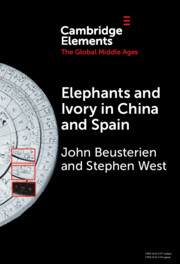Element contents
Elephants and Ivory in China and Spain
Published online by Cambridge University Press: 11 January 2025
Summary
- Type
- Element
- Information
- Online ISBN: 9781009172578Publisher: Cambridge University PressPrint publication: 06 February 2025

